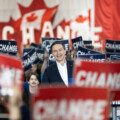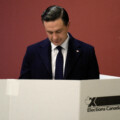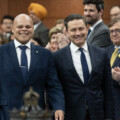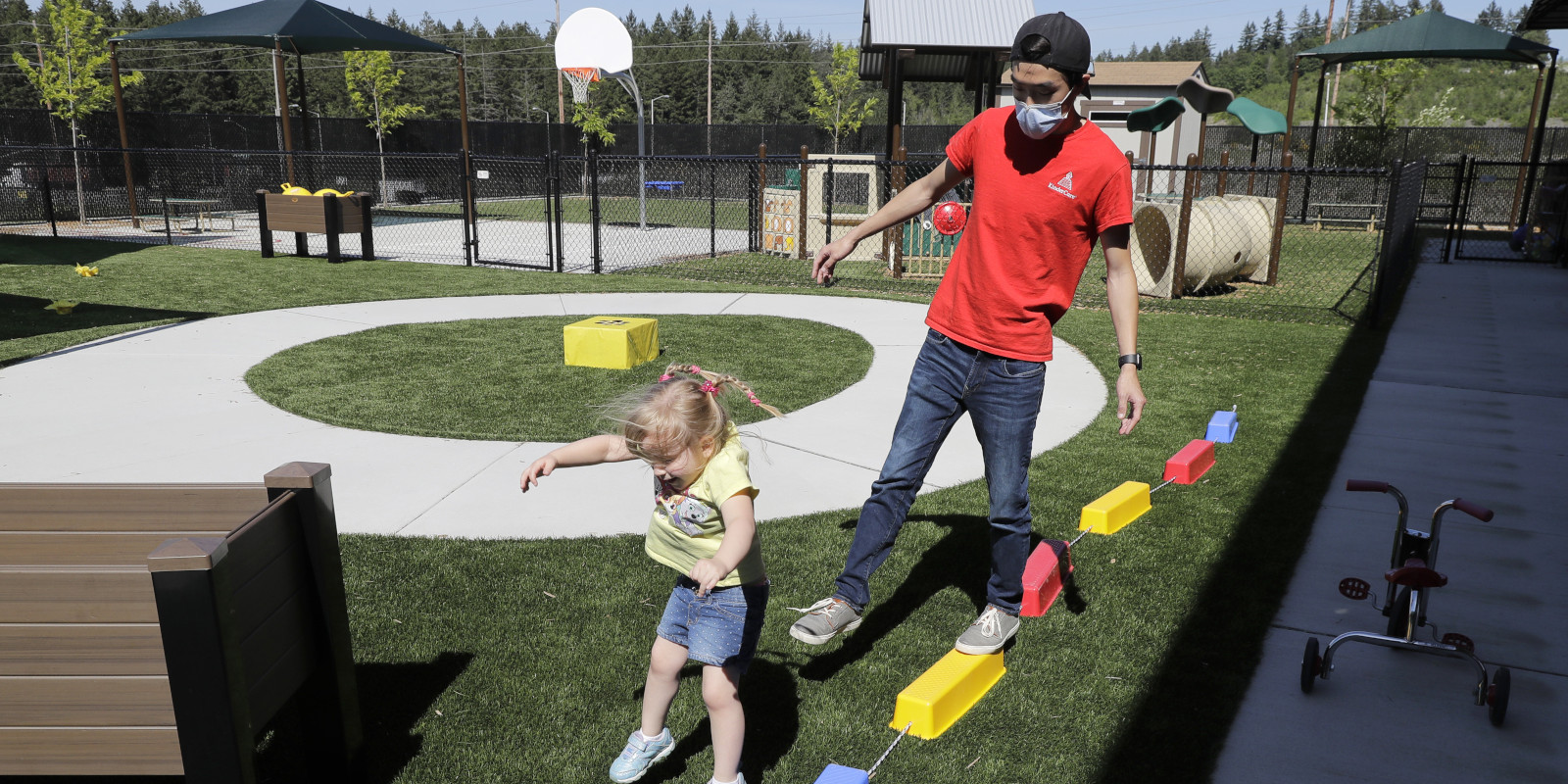Welcome to The Hub’s Federal Election 2021 Policy Pulse, where we’ll be tracking all the policy announcements from the major parties, with instant analysis from our crew of experts.
With the election scheduled for Sept. 20, we’ll be monitoring 36 days worth of policy ideas, so watch out each morning for the day’s live blog where we’ll be tracking every announcement as it happens.
4:00 p.m. — We’re missing something from the policy debate on child care: the best interests of the child
By Howard Anglin, contributor at The Hub
Ken Boessenkool’s piece in the Hub earlier today posited that neither of the two main parties had found the sweet spot on childcare. The sweet spot or “middle ground” is evaluated as an electoral, economic, and constitutional matter. Curiously, the one measurement not discussed in his piece or his recent co-authored policy commentary for the CD Howe Institute is the most obvious measure of a childcare policy: the best interests of the child.
The CD Howe piece does include one tangential link to a 2019 study of the Quebec program that analyzed outcomes for children and compared them to studies of similar programs elsewhere, like the Head Start program in the United States. It does not, however, note the study’s conclusion that the Quebec program has resulted in no measurable improvement to children’s cognitive skills. This outcome has been described (with reference to an earlier 2015) study thus: “there’s no distinguishing between a child whose performance was improved (or worsened) by daycare and one who did not go to daycare.”
On the other hand, it seems worth noting that, overall, children in the program appear to have developed significantly worse noncognitive skills. Specifically: “At older ages, program exposure is associated with worsened health and life satisfaction, and increased rates of criminal activity.” This phenomenon has been written about extensively, including in progressive outlets.
Even the finding of no impact, positive or negative, on cognitive outcomes from Quebec’s program is challenged by studies of other childcare programs for very young children. One well-publicized study out of Italy showed that a single additional month of childcare between ages 0 and 2 “reduces IQ by 0.5 percent” by ages 8 to 14. Interestingly, this study concluded that the effect was strongest for children of more affluent families. As one social conservative website described the results: “the more money you make at work, the more likely it is that daycare will damage your children.” I would gently suggest it is more complicated than that, but it’s a study with all sorts of policy implications.
I know that raising these studies in a short “policy pulse” and just leaving it there is like pulling a grenade pin and walking away.
My point is that they (and any studies showing different results) should not just be part of the debate, but the heart of the debate. To look for the middle ground on childcare from the perspectives of parents, the economy, or even the voters and not consider the direct effects on children and the indirect and future effects on society is rather like studying the impact of athletes’ training on their coaches and on the fans, but not on the athletes’ performance itself: it rather misses the point.
3:00 p.m. — Price of everyday goods jumps considerably as inflation continues to rise
By L. Graeme Smith, The Hub’s content editor
Consumer prices are still rising. Statistics Canada’s latest report, released today, shows that Canada’s annual inflation rate reached 4.1 percent in August. This mark represents the highest inflation rate in 18 years, since March of 2003.
This is also the fifth consecutive month of rising Consumer Price Index rates, and follows a gain of 3.7 percent in July.
Everyday goods have seen considerable jumps in cost. In tangible terms, this looks like:
- Gasoline prices up 32 percent.
- Travel accommodation prices up 19.3 percent.
- Homeowners’ replacement costs up 14.3 percent.
- Furniture prices up 8.7 percent.
- Passenger vehicle prices up 7.2 percent.
- Meat prices up 6.9 percent.
- Video and audio subscription services prices up 5.8 percent.
- Household appliance prices up 5.3 percent.
Excluding volatile commodities such as food and energy still results in a 3 percent increase, while excluding gasoline alone shows that the CPI rose 3.2 percent.
Earlier in March of this year economist Philip Cross warned of these increases in Macdonald-Laurier Institute’s quarterly economic report, Will Canada’s rapidly expanding money supply result in higher inflation?
“Rising commodity prices fuel speculation that inflationary pressures may surface faster than financial markets or central banks anticipate. This reflects ongoing concerns about extraordinary policies adopted by central banks spawning higher inflation dating back to the Great Financial Crisis of 2008,” he wrote.
Questioning the enthusiastic embrace of quantitative easing, he continued on to ask: “If the rapid increase in central bank assets had unforeseen impacts on the money supply and the economy, how can central banks be able to predict and manage their reversal?”
Economist and Hub contributor Trevor Tombe is not ready to sound the alarm yet, though, commenting on Twitter that these numbers include weird COVID-19 base effects. Overall, he writes, these pressures are not expected to be sustainable.
“What does the market currently expect inflation in Canada to be over the long-run? Comparing inflation protected government bonds to normal ones is a useful measure. Here’s the latest: expectations of ~1.7 percent. Markets (sensibly) don’t expect today’s elevated rates to persist.”
1:30 p.m. — One good thing and one bad thing from each party’s platform
By Sean Speer, The Hub’s editor-at-large
This election campaign has been marked by hundreds of pages of party platform text and dozens and dozens of policy commitments. As The Hub’s executive director Rudyard Griffiths observed at its halfway point, “[we have been] deluged by a daily stream of announcements covering every aspect of Canadian life from healthcare to the environment to housing to a deep dive by the Conservative Party into the policy minutia of puppy mills.”
Some of the ideas have been good. Others have been bad. The former have tended to address a specific problem within the federal government’s purview in a well-developed and cost-effective way. The latter are policy proposals disconnected from a clear problem or a federal role or any sense of costs, trade-offs, or secondary consequences.
No political party has a monopoly on either. Each platform reflects a combination of good and bad ideas.
Delineating between the good and bad ideas across the different party platforms may be highly relevant if, as polls seem to anticipate, we end up in another minority parliament in which the government must cooperate with other parties to pass legislation and advance its policy agenda. There may be a need in these circumstances to draw from the good ideas put forward in the various platforms.
Therefore here is an inexhaustive and singular perspective on some good and bad ideas from each of the party’s platforms. A key consideration (though not a definitive one) is whether there’s a reasonable probability that a policy idea could find support from the other parties. If so, the incoming government can practice the time-honoured tradition of stealing (or drawing upon) its opponents’ best ideas.
Conservative Party
Good: The Conservative Party’s promise to double the Canada Workers Benefit would increase incentives for low-income workers to find and obtain employment by boosting their take-home pay. It’s a good idea that (1) tilts the federal tax and transfer system more in the direction of supporting paid work and (2) could sustain support in a minority parliament.
Bad: Its promise to effectively bring digital streaming services into the Canadian content regulatory model represents one way – but ultimately a bad way – to solve for the asymmetrical treatment between traditional Canadian broadcasters and their online competitors. The better way would be to liberalize the regulatory model altogether and permit content production and dissemination in Canada to reflect consumer demands rather than bureaucratic diktats.
Green Party
Good: The Green Party’s proposal to use federal infrastructure dollars to build in a national energy grid that enables the transmission of low-cost, low-emitting energy sources from provinces like Quebec, Manitoba and British Columbia to provinces that rely on higher-cost, higher-emitting sources could boost Canadian competitiveness and help to achieve our climate goals. In a world in which the federal government is consistently failing to fully spend its infrastructure envelope, this is one area that ought to be prioritized.
Bad: The Green Party promise to cancel all new oil exploration projects presupposes that global oil demand is going to precipitously drop or that the domestic industry’s emission intensity is going to necessarily be higher than our global competitors. Both of these assumptions are incorrect. If the government incorporated these mistaken assumption into its policies, Canada’s economy and the global climate would suffer the consequences.
Liberal Party
Good: The Liberal Party’s proposal to establish a Canada Advanced Research Projects Agency based on the DARPA model in the United States could help to shake up Canada’s sclerotic innovation ecosystem and catalyse scientific and technological breakthroughs. Implementation will matter a great deal but in conceptual terms this is a good idea that was also supported by the Conservative Party.
Bad: The Liberal promise to establish a new minimum tax rate so as to prevent high-income earners from fully benefiting (or what the platform describes as “excessive use”) from various tax expenditures may reflect a legitimate concern about the overall progressivity of the federal tax system but fails to address the source of the problem which is the regressivity of different tax provisions. A more efficient and equitable option would be to directly address the source of the perceived problem by eliminating or reforming specific tax expenditures as opposed to layering another form of complexity on top of the system.
New Democratic Party
Good: The NDP proposal to establish an Employment Insurance pilot program to allow workers with episodic illnesses and disabilities to draw on EI Sickness Benefits is a crucial reform to the current system. The present model is too binary – one is either working or sick – and therefore makes it challenging for workers with episodic illnesses or disabilities to participate in the labour market. One option to implementing this idea may be to draw on the EI Work-Sharing model as a policy basis for providing partial benefits to workers whose employment fluctuates due to their health circumstances.
Bad: The NDP promise of a national pharmacare model fails to grapple with the consequences for the vast majority of Canadians who receive drug coverage through their employers and who are, according to various polls, satisfied with their drug access and affordability. There may indeed be a problem here for a small share of the population but disrupting the status quo for most Canadians seems like a costly and inefficient means of solving for a targeted cohort.
People’s Party
Good: The People’s Party proposal to review and reform the federal Equalization program so as to minimize the so-called “welfare trap” for provinces is a worthwhile exercise. Although the principle of equalization is constitutionally entrenched, there’s nothing requiring the federal government to maintain the equalization program in its current form. There’s a reasonable argument that the current model is too complicated and creates too much moral hazard for equalization-receiving provinces and we shouldn’t be afraid to consider how the program could be better.
Bad: The People’s Party promise to cut the number of refugees resettled in the country fails to reckon with the magnitude of ongoing refugee challenges globally, Canada’s humanitarian impulses and obligations, or the contribution that refugees can make it our society. This of course doesn’t mean that there are areas for reform (including the People Party’s proposal to prioritize private sponsorship) within Canada’s refugee system, but the idea of indiscriminately cutting refugee intake is a bad idea.
11:30 a.m. — Neither of the big two parties found the middle ground on child care
By Ken Boessenkool, contributor at The Hub
Child care has been among the highest profile policy offerings in this campaign. This is not a surprise as the Liberals made their child care plan the centrepiece of their April Election Platform… I mean the federal 2021 Budget. And then the Conservatives responded with their own, very different, plan during the campaign.
Mom’s face among the biggest challenges during what looks increasingly like a long extended COVID period. In addition to hoping dads learn to play a greater role in child care, it has created a large demand for new child care policies from political parties.
So how should those plans be evaluated?
Let’s start with a policy lens. Earlier this year, Dr. Jennifer Robson and I wrote a longish paper on child care for the CD Howe Institute. The authors’ note in that paper reads as follows:
The authors would also like to note that this paper is the result of a collaboration between the authors who bring distinct perspectives to the topic of early learning and care among other policy issues in Canada. The final paper reflects a negotiated area of common agreement and it is our hope that differences, partisan, regional and otherwise, can likewise be resolved between governments in Canada to rapidly advance the expansion of child care for families.
In short, Dr. Robson and I wrote that paper hoping to find middle ground. We laid out a set of proposals that would incrementally, albeit aggressively, build on the existing child care infrastructure in Canada. That infrastructure has roughly four pillars, as I we outlined in that paper and I summarized for The Hub soon after the federal budget.
First, kids are not boats. Only a couple decades ago, If you were a middle income family the Canadian tax and transfer system treated your purchase of a boat the same as having a child — you got no tax or transfer benefit for either. Since the early 2000s both Conservative and Liberal governments have created benefits for children. Throughout Stephen Harper’s ten years in office, tax and transfers to families with kids grew to $19 billion annually. Trudeau boosted that to just over $22 billion and refocused benefits toward lower income families.
Second, beyond the public interest in children qua children, public policy should recognize also the additional cost of working or going to school while having children. Put another way, if you work you should not be dis-incentivized to have children and if you have children, you should not be dis-incentivized to work.
Child care policy should also correct for two market failures. One (third pillar) is a signalling failure regarding the quality of care. In a dynamic child care market, providers will always have more information than purchasers of care. For this reason, governments should play a role regulating the quality of care.
The other (fourth pillar), is a deficiency of child care spaces to meet the demands of parents. Available spaces will be heavily influenced by the level of tax or cash support for child care because more generous support will make more money available to build spaces. It will also be influenced by the degree of regulation because a more stringent regulatory regime will increase the cost per space. Yet, even with very generous tax or cash support and modest regulation, the market may not produce adequate spaces. Filling this gap can be achieved by targeting public subsidy for spaces, whether operating or capital.
In short, any reforms to child care should address both both the demand side (cash to parents) as well as the supply (regulation and provision of spaces) sides of the child care equation.
From this perspective both the Conservative and Liberal child care plans are a bust. Neither party found the middle ground.
The Conservatives are bringing a fix to the supply side of the equation. They want to convert the misogynist (based on the lower income spouse) and tilted to the rich Child Care Expense Deduction into a refundable credit based on family income. The CCED was designed in a day when lower income spouse’s (then, as now, predominately moms) income was largely considered discretionary. And because it is a deduction, its value rises as your tax rate rises. And Conservatives say their refundable credit will be paid monthly, not annually at tax time.
This will focus the benefit on lower and middle income Canadians, and because it is refundable, it will be available to families even if they pay no tax. And it will be available as needed — not just at tax time. Smart. Sensible. Contemporary.
But there is nothing in the Conservative plan to address supply side challenges. Bust.
Meanwhile, the Liberal plan is a large set of ambitious aspirations in the hopes that they will be able to leverage provincial governments into delivering something approaching $10 a day child care. They have, impressively, negotiated bilateral and asymmetric agreements with eight provinces. And while these agreements are more aspiration than perspiration, they deserve full marks for working with provinces to reach their goals. And their goals are largely on the supply side of the child care equation.
But there is nothing in the Liberal plan to fix the principle demand side policy tool, the Child Care Expense Deduction. Bust.
A quick aside on Quebec. Many child-care advocates spend a lot of time saying they want to replicate the Quebec model across Canada. But here’s the thing. Quebec has its fabled $7/day child care, but it is not universally available. That would cost far too much. So it also has a refundable credit that is the precursor to the refundable credit in the Conservative plan. So in a sense, both the Conservatives and the Liberals can claim Quebec as the forbearer of their plans. And they’d both be right, and wrong.
Now lets switch to a political lens.
Here, I think the Conservative Plan has the edge. And they have Justin Trudeau as well as Stephen Harper to thank for that. In every election since 2006 (and arguably one or two before that) the party who subsequently formed government had, as one the centrepieces of their campaign, a promise to increase cash payments to parents for children. Trudeau continues to tout his tinkering with Harper’s child benefits as one of his signature accomplishments.
In sum: Canadian parents are not only used to hearing about more cash in their pockets for kids, they are used to experiencing more cash in their pockets for kids.
Compare that to nearly 20 years of successive promises from the Liberals to bring in some version of “universalchild care.” And here they are again, having failed to do it for 20 years.
In sum: Canadians parents are used to hearing promises for universal child care for their kids, but have no experience of seeing universal child care for their kids.
The Liberal plan suffers from a political credibility gap — a gap the Liberals helped to open. The Conservative plan does not suffer from a political credibility gap — a gap the Liberals helped to close.
So when given a choice between the aspirational “$10/day universal child care” and “more cash in your pocket,” I think more Canadians will lean towards the latter, even if, in some perfect world, they might prefer the former.
As we head to what is almost certainly a minority, I hold out hope that a new government might look for common agreement that addresses both supply and demand side challenges in child care. That would be a big win for families.
10:30 a.m. — Canada must find its own way in a century that belongs to no one
In an increasingly uncertain geopolitical world, Canada is caught between the United States, the devil it knows, and China, the devil it is rapidly becoming better acquainted with. Read this piece by economist Livio Di Matteo on the implications for our country and its leaders:
With China’s increasing confidence, its cover as the shy duck that peddles furiously beneath the surface has been blown and the international pushback currently underway means that unlike the 19th or 20th centuries, the 21th century will belong to no one in particular.
It will be an oddly self-regulating disordered world with constantly shifting alliances and interests that afford opportunities and imperatives for trade and global cooperation given issues such as climate change. In some respects, for many countries — Canada included — it could well be a political metaphor for the perfectly competitive world of economic models where we must take the world as a given and adapt.
A more multi-layered competitive world with three or four superpowers and a half a dozen secondary powers and then everyone else falling in line could also be seen a sort of oligopoly type leadership model. Either way, we will be doing a lot of following.
Canada has yet to find its way in what has become a more multipolar world.
9:00 a.m. — The National Assembly is demanding an apology. What does it mean for the election campaign?
By Antonia Maioni, a political science professor at McGill University
Yesterday was an important day in Quebec politics, not because of visits from federal party leaders, but because the National Assembly reconvened for the fall session. And, as a first order of business, two motions were passed unanimously.
The first, brought by the Parti Québécois, asked for an apology from the Leaders’ Debates Commission for the question asked by moderator Shachi Kurl at the outset of last Thursday’s English-language debate, which was seen to characterise Quebec as a “racist and discriminatory society.”
That question has truly divided the country. A poll conducted by Leger and reported on this morning by Le Journal de Montréal shows that 65 percent of Quebecers thought the question was inappropriate. In the rest of Canada, 69 percent of respondents thought the question was acceptable.
The second motion was presented by the Liberal party of Quebec, which launched its own petition against “Quebec-bashing,” even though some of its own members have been vocal against Bill 21 (which limits religious symbols) and even Bill 96 (which extends the reach of French-language laws).
Does this mean that all Quebecers and their political representatives think and vote alike? Obviously not, since there are four parties in the National Assembly and four more representing Quebec’s 78 seats in the House of Commons. But to understand the dynamics at play in the federal election campaign in Quebec, it would be wise to consider the central importance of provincial politics. Why? Because for most Quebecers, that is where the heart of the matter resides.
The Quebec government is, for all intents and purposes, the primary focus for citizen engagement with the state. The Quebec that emerged out of the Quiet Revolution had the state as its motor in many matters, most particularly the economy, social policy and, ever important, language and identity.
That’s why, in a federal election campaign, most Quebecers look to the ballot box as a choice of interlocutor with their provincial government. And, conversely, Quebecers will look to their provincial premier as the spokesperson for Quebec in Canada, whether or not they are of the same political stripe.
It is especially important to understand this dynamic with respect to francophone voters in Quebec, a key target of every federal party in this election campaign. For some, the Liberal party of Canada is compelling for historical reasons (complicated but enduring), for “favoured-son” reasons (having a francophone Quebecer like Justin Trudeau as prime minister in Ottawa), or as a credible progressive alternative. These can include nationalist voters, although they are less likely to be active supporters of sovereignty.
For others, especially some progressive nationalists for whom the federal Liberals are anathema (Trudeau père et fils doubly so) and federal elections an afterthought, the Bloc Québécois remains a safe haven. Although its strength can wax and wane, as we have seen, Yves-François Blanchet can rouse protest votes amongst both nationalist and sovereigntist francophones.
As for the bleus, conservative Quebecers from time out of mind, the Conservative party may make sense if its leader can show a willingness to accept Quebec’s distinctive society and the Quebec government’s role in protecting their national interests, something Erin O’Toole has tried to do, but may be getting lost in translation.
7:00 a.m. — Where the leaders are today
Stay tuned for details about Liberal leader Justin Trudeau’s schedule
Conservative leader Erin O’Toole will be in Jonquiere, Quebec at 10:30 a.m.
Stay tuned for details about NDP leader Jagmeet Singh’s schedule.
Recommended for You

‘We have to cap population growth’: Ten quotes from Pierre Poilievre’s EXCLUSIVE Hub interview

A win, a warning, and a wobble in Alberta’s byelection results

‘We now have to build on the coalition’: Pierre Poilievre on his federal election loss and the future of Canada and the Conservative Party

Paige Saunders and Sean Speer: The contrarian case for why Conservatives should embrace electoral reform



